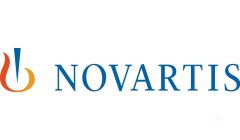Novartis data again demonstrate age-appropriate development when Zolgensma is used presymptomatically, and post-hoc data reveal SMA Type 1 patients could speak, swallow and maintain airway protection

Novartis announced new data that reinforce the transformational benefit of Zolgensma (onasemnogene abeparvovec), an essential one-time treatment for spinal muscular atrophy (SMA). The completed Phase 3 SPR1NT study demonstrated that children with three copies of the SMN2 back-up gene who were treated presymptomatically achieved age-appropriate motor milestones, including standing and walking. In addition, a descriptive post-hoc analysis of START, STR1VE-EU and STR1VE-US (n=65) indicated children with SMA Type 1 achieved or maintained important measures of bulbar function following treatment with Zolgensma, including the ability to speak; swallow and meet nutritional needs, and maintain airway protection. These data are among a Zolgensma data set being presented during the 2022 Muscular Dystrophy Association (MDA) Clinical and Scientific Conference, which also include, in part, real-world data from the RESTORE registry and a chart review of US patients who changed therapy to Zolgensma.
Without treatment, most children with three copies of the SMN2 back-up gene develop SMA Type 2, characterized by the inability to walk independently. In contrast, 14/15 children (93 percent) in the three-copy cohort of SPR1NT went on to walk independently, most (11/15, 73 percent) within the World Health Organization (WHO) window of normal development. All 15 children (100 percent) met the primary endpoint of standing alone ≥3 seconds, including 14/15 (93 percent) within the WHO window of normal development. All children were free of feeding tube support and ventilatory support of any kind during the study, and no serious, treatment-related adverse events were reported.
“Results from SPR1NT again confirm the remarkable impact of Zolgensma for children at risk for SMA who are treated before the onset of symptoms. In sharp contrast to the natural course of SMA, children treated preemptively with Zolgensma are standing and walking, with few or no signs of neuromuscular disease. Many of these children achieve patterns of motor development indistinguishable from their healthy peers without SMA,” said Kevin Strauss, M.D., Medical Director, Clinic for Special Children in Pennsylvania. “These data clearly demonstrate the value of newborn screening for SMA, which is vital to affording children the earliest diagnosis and treatment to ensure the best possible outcomes.”
“The effect of SMA Type 1 on bulbar function often leads to debilitating complications, such as the increased risk of aspiration, as well as social consequences from impairment of speech development. These post-hoc data suggest Zolgensma can have an important impact on a child’s well-being,” said Shephard Mpofu, M.D., SVP, Chief Medical Officer, Novartis Gene Therapies. “Additional data presented at MDA continue to reinforce the consistent, significant and clinically meaningful therapeutic benefit of Zolgensma in the real-world setting, including in patients outside of our current clinical trial experience.”

Subscribe To Our Newsletter & Stay Updated